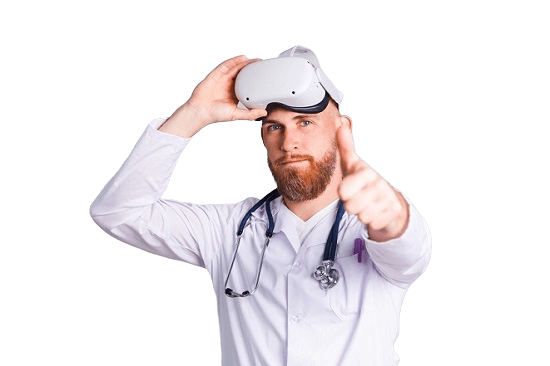An overview of the use of virtual and augmented reality in medicine
Medicine is such a vast field it would be impossible
to write about every technological advancement in a
single page. Hence, I am going to purely focus on
the use of virtual and augmented reality; from
planning procedures to communicating with patients.
Listed below are the topics in which we shall dip
our toes, as well as links to where, if you are so
inclined, can find out more about the topic.
Below you can find information about how VR/AR
technologies are working towards.
